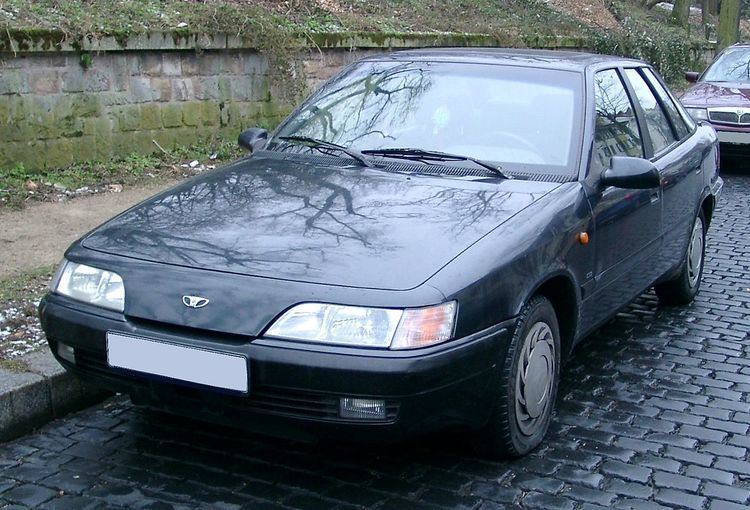Manufacturer Daewoo Motors Production 1990–1997 Class Mid-size car (D) | Also called Daewoo Aranos Designer Bertone | |
 | ||
Assembly Bupyeong, South Korea
Kerman, Iran
Warsaw, Poland (FSO)
Craiova, Romania (Rodae) | ||
The Daewoo Espero (also known as Daewoo Aranos in some Spanish-speaking countries) was a four-door, five-seater mid-sized notchback saloon produced by the South Korean company Daewoo Motors from September 1990 to 1997. It was technically based on the GM J platform and had the distinction of a body designed by Bertone. It bore more than a passing resemblance to the Citroën Xantia, itself also a Bertone design. The car was equipped with Holden-built GM Family 1 1.5 L 90 hp (67 kW; 91 PS) engine, or the 1.8 95 hp (71 kW; 96 PS) or 2.0 L 108.5 hp (81 kW; 110 PS) Family II engine. The Espero was replaced by the Daewoo Leganza in 1997.
The Espero was renamed Aranos in some but not all Spanish-speaking countries (not in Argentina and Chile for instance), since the word Espero means "I wait" in Spanish. Such a name was deemed less than marketable.
In Australia it was sold from 1995 to 1996 before it was replaced in 1997 by the Leganza. It was powered by the 2.0 litre GM Family II engine and was available with either a 5-speed manual or a 4-speed automatic.
The Espero's 2.0 litre engine was built in Australia and exported to other countries for assembly.
The European market
European imports began in January 1995 when it was one of two cars (the other being the Nexia) in the first European Daewoo range.
While the Nexia is based on the Astra Mk2 or Kadett E (GM's T-Type Platform), the Espero is based on the Cavalier Mk2 or Ascona C (GM's J-Type Platform). It sold well, thanks to its competitive asking price, notchback roofline with a steeply raked rear window, spacious interior, luggage compartment, impressive equipment levels and the comprehensive aftersales package.
Despite the fact the Espero also featured couple of drawbacks as outdated interior design backing to the 80's, mediocre fuel economy and its body fairly prone to corrosion it still maintained popularity among price-conscious drivers.
The Espero was launched just months before the Vauxhall Cavalier (Opel Vectra A) was discontinued and the Vauxhall Vectra (Opel Vectra B), the Cavalier's replacement, was introduced.
